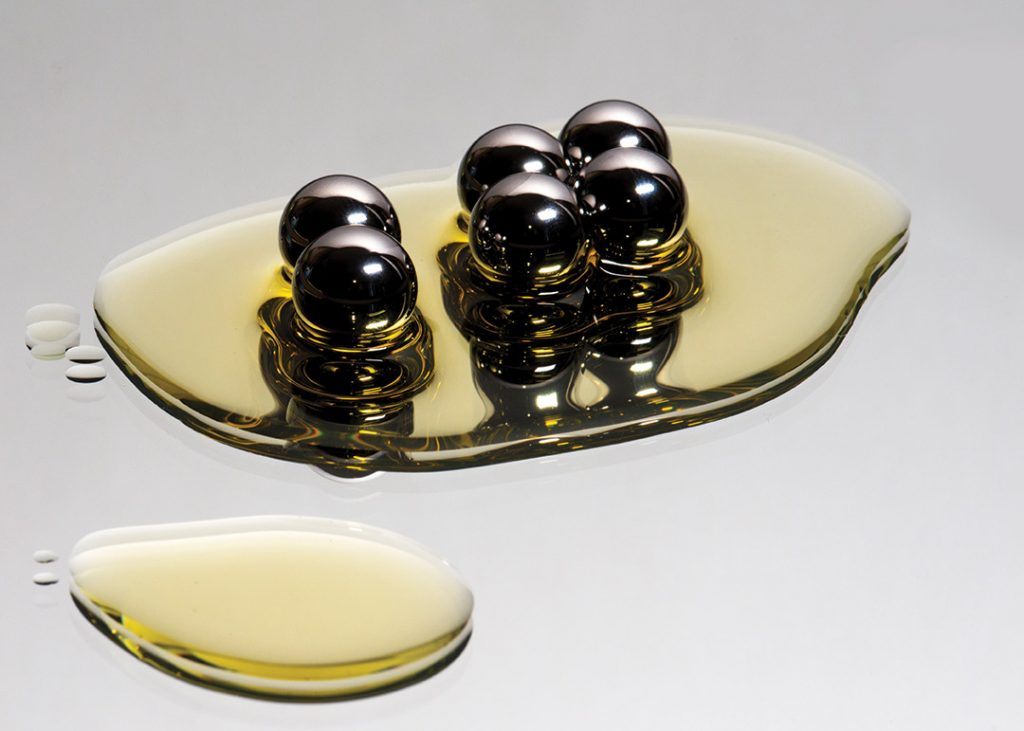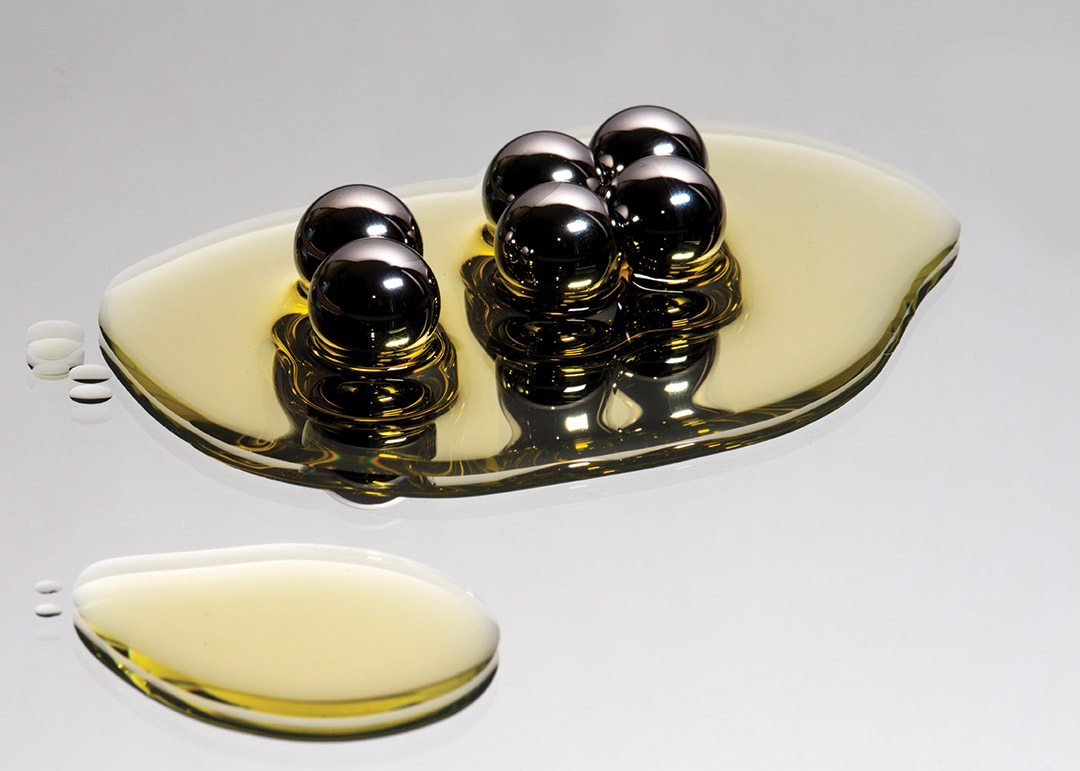
 Most bearings are lubricated with grease and most users practise either a preventative maintenance (PM) strategy for bearing relubrication or their bearings are “lubricated for life” (LFL).
Most bearings are lubricated with grease and most users practise either a preventative maintenance (PM) strategy for bearing relubrication or their bearings are “lubricated for life” (LFL).
Both methods use a basic premise in which the L1 grease life is calculated. L1 means that we have calculated a life in which our confidence that 99 per cent of the grease in the bearing is still functional.
Using the LFL strategy, the L1 life is adjusted by a multiplier of 2.7 to reflect an L10 life for the “sealed bearing.” It should be noted that this “sealed life” may be less or more than the L10 “fatigue life” of the bearing. The LFL strategy is generally used for machinery in which the L10 “sealed life” exceeds the expected life of the machine itself or some component of the machine.
When using the PM Strategy and the L1 life is reached, this is the basic lubrication interval (tf). The intent is that the grease is fully replaced with fresh grease. Therefore, the amount of grease inserted into the bearing is based on the bearing dimensions (outer diameter and width), and this is the amount that is always inserted regardless of frequency of relubrication.
The next step in the strategy is to apply adjustment factors that take into consideration the conditions that the bearing experiences. Some of those conditions include the design conditions, such as a vertical or horizontal shaft, duty cycle, load, and the bearing speed. These conditions generally do not change. Other conditions are environmental: temperature, degree of contamination, and vibration (shock load).
A multiplier is assigned to each of these conditions and an adjusted (shorter) lubrication interval is generated. This adjusted lubrication interval is called the “corrected interval” (tfc). With this shortened interval, the amount of grease that is inserted remains the same. The idea is that the grease life has shortened and therefore it must be replaced sooner.
In almost all cases, the relubrication interval of a machine is determined based on the design conditions and assumed environmental conditions and is set at machine installation. From there on in, it is rarely ever adjusted or reconsidered.
Certainly, there are many cases in which machines do not operate as originally designed. They may find themselves in dirtier applications, their associated equipment may go out of balance, the cleaning/washdown procedure may have changed, and other possible changes due to processes and procedures. This certainly suggests a weakness in the traditional PM strategy for bearing lubrication.
There is room for another strategy which does take into consideration of changes in the bearings. That strategy would be condition based greasing. The general technique is either to measure vibration and look at the enveloped acceleration levels or to measure the ultrasound emitted in decibels using an ultrasonic device.
In either case, a measurement is taken on the machine and then if the levels are elevated, then grease is added until the measured value decreases. The amount of grease added is either the appropriate volume, based on the bearing size, or enough grease to reduce the amplitude of the vibration/sound reading.
Certainly, the benefit of CB greasing is that it does address the understanding that the bearing conditions do change and that if the conditions have changed, and the grease is no longer able to do its job, then it is replenished at a shortened and needed interval.
On the other hand, there are a few concerns. One concern relates to the three stages of grease lubrication:
Churning – is the first 24 hours of grease lubrication and when the separating film is a combination of the soap plus the oil film.
Bleeding phase – is the stage that lasts the longest and occurs when the grease is piled on the cage and beside the rolling element tracks and feeds oil into the lubrication gap as needed. It should be noted that the amount of oil is “barely enough” for lubrication and is much different than using an oil bath or circulating oil in terms of generating full film separation. The last stage is the death of the grease in which it is no longer able to prevent metal-to-metal contact.
Severe film breakdown – occurs when the grease is spent. The question at hand: what are the instruments picking up? Stage 2 or Stage 3? Since Stage 2 is “starvation,” is this perhaps just a normal stage of grease lubrication and relubrication is not necessary?
Another question is based on the second job of grease: sealing, since one of the two main jobs of grease is to seal and carry away contamination. If measuring ultrasonic noise or acceleration is focused on what is going on inside the bearing, are we not addressing the grease flow needed to carry away contamination?
In other words, bearings in severely contaminated environments whose PM grease interval is based on the need for grease to purge the contamination away from the bearing will always have enough fresh grease in the bearing. If we use a CB greasing strategy, there is the possibility of not achieving appropriate sealing and preventing the ingress of contamination.
There is a place in the lubrication world for CB greasing. It promises both the opportunity to address fluctuating conditions that the bearing may see, and the opportunity to perhaps reduce lubricant consumption. Depending on the selected instruments, it can also be integrated into a facilities condition monitoring/reliability program.
However, like all strategies, it must be used in the right place. In applications where lubrication is not the primary purpose of re-greasing, it may hamper the bearing sealing system from performing as designed.

